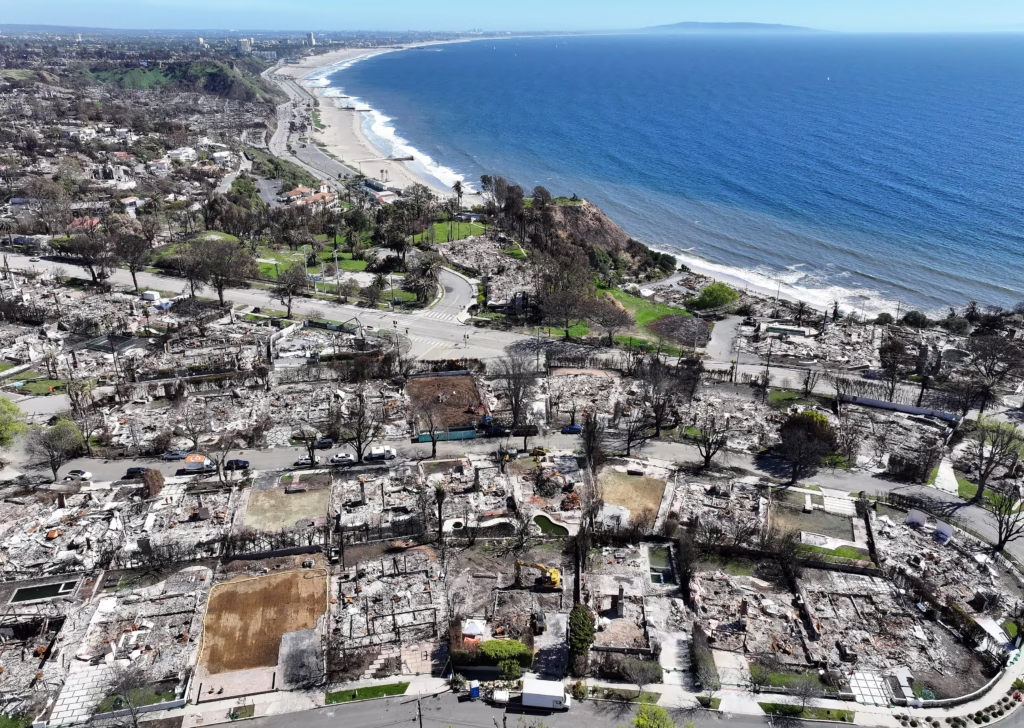LOS ANGELES, USA — A 29-year-old man, Jonathan Rinderknecht, has been arrested on suspicion of starting the Pacific Palisades wildfire, one of the deadliest and most destructive blazes in Los Angeles history, which killed 12 people and destroyed over 6,000 homes in January.
Justice Department officials revealed that digital evidence retrieved from Rinderknecht’s devices included AI-generated images created on ChatGPT depicting a burning city, raising questions about the suspect’s state of mind before the inferno.
The fire erupted on 7 January near a hiking trail overlooking the affluent Pacific Palisades neighbourhood and quickly spread, scorching over 23,000 acres (9,308 hectares) and causing damage estimated at $150 billion (Sh22.4 trillion).

Entire communities were wiped out, including parts of Topanga and Malibu, and the homes of celebrities such as Mel Gibson, Paris Hilton, and Jeff Bridges were among those destroyed.
Acting U.S. Attorney Bill Essayli, speaking at a press briefing in Los Angeles, confirmed Rinderknecht’s arrest in Florida on Tuesday. “The arrest, we hope, will offer a measure of justice to all those impacted,” he said.
Essayli added that further charges, including murder, could follow pending the ongoing investigation.
Authorities allege that Rinderknecht, a former resident of Pacific Palisades who had lived just a block from the Skull Rock Trailhead, ignited the fire using an open flame shortly after completing a ride as an Uber driver on New Year’s Eve.
Data from his mobile phone placed him near the origin of the blaze on 1 January, contradicting his claims that he was elsewhere at the time.
Uber confirmed that Rinderknecht was not active on its platform when the fire began, but said it had cooperated with federal investigators, providing GPS records to assist in tracking his movements.
The company has since permanently banned him from the app.
Investigators also found disturbing digital trails: in July 2024, months before the blaze, Rinderknecht allegedly asked ChatGPT to create a “dystopian painting” showing a burning forest and crowds fleeing a fire, alongside imagery of the wealthy watching “the world burn down.”
Another prompt, made weeks before the fire, read: “I literally burnt the Bible that I had. It felt amazing. I felt so liberated.”
Officials said the suspect appeared visibly anxious during questioning, with one investigator noting that “his carotid artery would visibly pulsate whenever he was asked who started the fire.”
California Governor Gavin Newsom described the arrest as “an important step toward bringing closure to the thousands of Californians whose lives were upended,” pledging continued state support for the federal probe.
Meanwhile, the Los Angeles Fire Department (LAFD) released its After-Action Review Report (AARR) hours after the arrest.
The report exposed systemic weaknesses in emergency response, citing delays in evacuation alerts, shortages of firefighting resources, and leadership inexperience during the 25-day inferno.
“Responders were faced with the inevitable consequences of a perfect storm, dry vegetation, unrelenting winds, ember cast, and a loss of aerial suppression support,” the report noted.
Interim Fire Chief Ronnie Villanueva, who replaced sacked chief Kristin Crowley, said the findings would “strengthen public confidence in the LAFD’s readiness to respond to future wildfires.”
He added that the department had since upgraded communication systems and emergency protocols.
Rinderknecht, who moved to Florida shortly after the blaze, appeared before a Florida court on Wednesday and is scheduled for a hearing in Orlando on Thursday.
He is expected to enter a plea when formally arraigned in Los Angeles in the coming weeks.
The Pacific Palisades Fire remains a chilling reminder of how a single act, whether intentional or reckless, can devastate entire communities, exposing the fragility of even the most prepared cities in the face of rising climate-driven fire risks.



